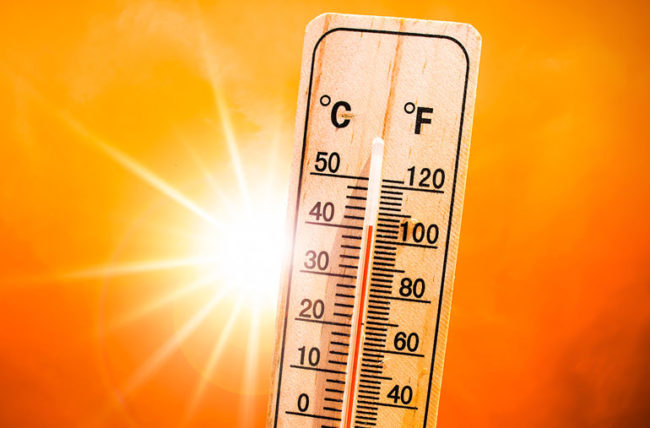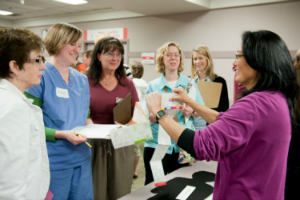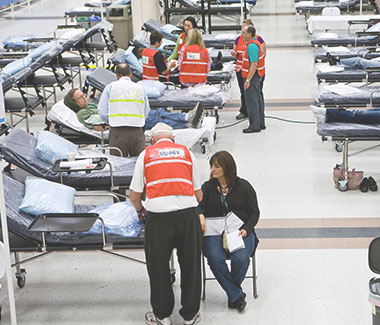

The Network spearheads coordination and collaboration to save lives during an extreme heat response.
In late June 2021, amidst a continued response to the COVID pandemic, the Pacific Northwest faced an unprecedented heat wave, with temperatures persisting over 100 degrees for multiple days, a rare weather occurrence in the region. This created a very high risk of heat-related impacts/illness for much of the population of Western Washington, especially those who are heat sensitive and those without effective cooling and/or hydration. At a time when hospitals and healthcare facilities had been in response mode, creating extreme response fatigue, appropriately supporting healthcare in a proactive manner regarding these dangerous temperatures was of the utmost importance.
The importance of situational awareness
As the heat event drew closer, the Northwest Healthcare Response Network (the Network) increased healthcare heat related preparedness efforts by starting daily check in calls with healthcare leaders, putting a response team on standby and increasing our support of messaging of heat related safety tips. During this time, there were multiple activations within the Network’s service area. The Network played a vital role through their relationships to convene healthcare leaders across Western Washington for information sharing, situational awareness and problem solving. This legacy and trust would greatly help during the response.
A few days into this weather event, the Network began receiving notifications about need for support with logistics and heat related concerns in long-term care facilities. On the evening of June 28, 2021 the Network began receiving notifications of the strain on hospitals experiencing a high surge of patients in their emergency departments. The Network was able to convene a late-night call with healthcare executives in the most impacted areas and neutrally broker equitable solutions to support increased patient care needs including supporting our Disaster Medical Coordination Centers (DMCCs) in their appeal for entering into an agreement on no divert during the heat event.
The hospitals were all in agreement of no one going on divert unless it was a pause to ensure that a hospital could address the needs of the patients, they had within their Emergency Department. The region’s experience with level loading during COVID, proved useful to again avoid any unnecessary divert statuses.
Throughout the next several days and nights, the Network worked side by side with our partners. The Network also provided support to ground truth ‘rumors’ which were causing additional stress to pre-hospital and hospital partners. Moreover, as part of the Network’s expertise in coordination, the Network provided up to date situational awareness, coordinated logistics requests and ensured there was a space and a structure for ongoing communication and coordination with and between healthcare facilities across the continuum of care.
This situational awareness and information sharing, along with collaboration with the regional DMCCs allowed our hospitals to continue to ensure that patients were getting the right level of care in the right setting.
A bridge to future activation
This was the first shared formal activation of the Network, Leading Age and the Washington Health Care Association (WHCA). This ensured not only the ability for the Network to serve as a liaison for the needs of long-term care, but also provided valuable insight and connections, specific to long- term care, to support problem solving and validation of information being reported to the Network and other partners. From this event, a partnership in preparedness and response and a commitment to activate collaboratively was born. Fast forward to the Montesano, Washington skilled nursing facility fire in November 2022, where a coordinated response led by the Network to support this facility and long-term care agencies in the evacuation and placement of 77 residents.
This response was also highlighted in “Notes from the Field” by the Office of the Assistant Secretary for Preparedness and Response (ASPR). Click to view the full impact story or the NWHRN Extreme Heat Tip Sheet.
The Network In the Media: https://www.commonwealthfund.org/publications/2022/oct/how-health-care-organizations-are-preparing-for-climate-shocks
returnOther Impact Stories


Impact Focus:
Multi-Agency Coordination
Ensuring Capacity...
The Challenge At least 25% of the population of the state of Washington is a pediatric patient, specifically under the… Read more »


Impact Focus:
Evacuation
Partnerships and...
Challenge: Relocating 77 vulnerable residents from a skilled nursing facility in rural Washington during a fire evacuation emergency. Montesano, Washington… Read more »



Impact Focus:
Situational Awareness
Extreme Heat...
The Network spearheads coordination and collaboration to save lives during an extreme heat response. In late June 2021, amidst a… Read more »
